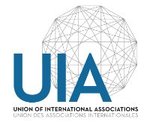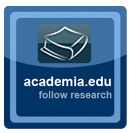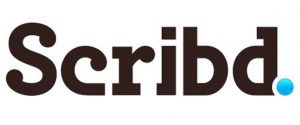Science and Education a New Dimension
Iss. 248. 2021
L. A. Apolonova Non-verbal means of optimizing the perlocutive influence of directive speech acts
https://doi.org/10.31174/SEND-Ph2021-248IX73-01
Abstract. The article considers the peculiarities of the use of nonverbal means in order to optimize the perlocutionary effect of directive speech acts. There are four types of implementation of nonverbal means of optimizing directives: prosodic, kinesic, proxemic and taxaic. Acoustic nonverbal components that are most important for intensifying the perlocutionary effect of directives include tempo, tone and volume of speech. Kinesis, as a means of perlocutionary influence, covers such common movements as gestures, eye contact and facial expressions. Proxemics regulates the distance between the addressee and the addressee of the motivation, and their spatial location. The nonverbal components of takesika mitigate the directive speech act
Keywords: perlocution, directive speech act, perlocutionary influence, means of optimization.
L. A. Apolonova Non-verbal means of optimizing the perlocutive influence of directive speech acts
L. M. Blysniuk, M. V. Sasiuk Structural and semantic peculiarities of the lexeme Heimatgefühl in German discourse
https://doi.org/10.31174/SEND-Ph2021-248IX73-02
Abstract. The article describes the structure of the lexeme Heimatgefühl and the word-forming means of this concept. In addition, the meaning of this word is revealed, that is the love for one’s homeland or a feeling of close connection with someone’s place of birth, home or region. Moreover, numerous synonymous units of the lexeme under analysis are listed. Also, examples of the functioning of the word Heimatgefühl in German discourse are given and its importance for the communicative act is revealed. In the study, Heimatgefühl appears as an emotional and social phenomenon which is often used in psychology.
Keywords: expressive, lexeme, love for the homeland, synonym, word formation.
L. M. Blysniuk, M. V. Sasiuk Structural and semantic peculiarities of the lexeme Heimatgefühl in German discourse
M. I. Boichuk Shortenings: clipping, acronyms and blending as productive ways of forming religious lexis in the English language
https://doi.org/10.31174/SEND-Ph2021-248IX73-03
Abstract. Religious lexis represents spiritual and mental values of human beings through expressing their worldviews. This study aims to determine the productive ways of forming religious lexis in the English language. Some of such ways of creating new words are clippings, acronyms and blending. The authors begin to study the general overview of the main features and characteristics of shortening processes. Special attention is paid to clipping, acronyms and blending and the productivity of these linguistic phenomena for the religious vocabulary. Based on a structural analysis of a comprehensive English dictionary a variety of the example of acronyms, blended words and clipped words have been presented and distinguished the difference between back formation and clipping. The results indicate that the religious vocabulary is not lacking these processes, but further research is needed to identify other ways of word-formation processes for the religious sphere.
Keywords: shortening, clipping, acronyms, blending.
M. I. Boichuk Shortenings: clipping, acronyms and blending as productive ways of forming religious lexis in the English language
T. V. Burmistenko, I. G. Lepeyuk, I. V. Sytdykova Theater practices in foreign language learning
https://doi.org/10.31174/SEND-Ph2021-248IX73-04
Adstract. Based on the experience of organizing theater festivals in French (foreign language) for secondary schools’ students, the authors of the article prove the effectiveness of theatrical practices in teaching French as a foreign language. Teaching a foreign language considers the theater as one of the pedagogical tools that performs linguistic tasks. Thus, the educational challenge is to exploit the function of theater, which is to bring out the artistic potential of the student while making him acquire skills in a foreign language and culture.
Keywords: linguistic competence, communicative approach, artistic education, interaction, oral expression.
T. V. Burmistenko, I. G. Lepeyuk, I. V. Sytdykova Theater practices in foreign language learning
T. A. Chaiuk, K. S. Karpova One pandemic – four stories: Modelling the reality in British, American, Australian and Indian headlines
https://doi.org/10.31174/SEND-Ph2021-248IX73-05
Abstract. The article examines headlines of online media from the United Kingdom, the United States of America, Australia and India, published in January, 2021, in order to reconstruct models of the ‘pandemic reality’ shaped by these titles in their audiences. The analysis reveals that each of the media builds a peculiar model, which is achieved by focusing on specific aspects of the pandemic, such as its global or national scope, by linking medical and political issues, and by drawing on certain metaphors.
Keywords: headline, pandemic, metaphor, model of reality, conceptualization.
T. A. Chaiuk, K. S. Karpova One pandemic – four stories: Modelling the reality in British, American, Australian and Indian headlines
O. M. Goncharenko Romantic and erotic aspect of Ukrainian folk songs about a Cossack lover
https://doi.org/10.31174/SEND-Ph2021-248IX73-06
Abstract. The article deals with the peculiarities of the romantic-erotic image of a Cossack-lover in Ukrainian song folklore. Its origin is due to prehistoric times, the conditions of the military way of life, the traditions of the Zaporozhian Sich. It is noted that all the elements of the song are subject to the manifestation of the feelings of lovers, especially glorifies the soul of the Cossack, who is capable of deep experiences, emotional manifestations of his inner essence. The love for the girl brought only misfortune into the life of the Cossack, because it deprived him of the opportunity to faithfully fulfill his sacred duty – to protect his native land. His position is divided: on the one hand, he seeks to enjoy love, and on the other – he is overwhelmed by an unbearable desire to fight to feel the short-lived will, glory. Cossack lyric songs convincingly testified that the erotic image of a Cossack warrior contains the rudiments of a sun deity, an otherworldly serpent and a sacred ancestor symbol, as well as romantic aspects of the image: the extraordinary sensuality of the Cossack, his supernatural abilities, the spirit of invincibility forces of nature.
Keywords: lyrical songs, plot, image, Cossack-warrior, lover.
O. M. Goncharenko Romantic and erotic aspect of Ukrainian folk songs about a Cossack lover
O. V. Gordiyenko Dynamics and trends in the development of English medical lexicography (XVII c. - early XXI c.)
https://doi.org/10.31174/SEND-Ph2021-248IX73-07
Abstract. The article is devoted to the study of lexicography for specific purposes (LSP Lexicography) using diachronic approach with a focus on the study of English medical lexicography. The dynamics and tendencies of English medical lexicography development at each stage of its existence are investigated, the main features of lexicographic presentation of English medical terminology in dictionaries of different types are revealed. The study was based on English medical dictionaries created during the period (XVII c. – early XXI c.) with a total of 480 publications: 370 are linguistic dictionaries of various types and 110 – factual dictionary reference books (nomenclatures, encyclopedias, compendiums, etc.).
Keywords: terminological lexicography, lexicographic analysis, English medical dictionaries, periodization of dictionaries.
O. V. Gordiyenko Dynamics and trends in the development of English medical lexicography (XVII c. – early XXI c.)
A. M. Gvantseladze Semantics of similarity within the functional-semantic field of comparativity in the Turkish language
https://doi.org/10.31174/SEND-Ph2021-248IX73-08
Abstract. The article is focused on the study of constructions that express similarity within the functional-semantic field of comparativi- ty in the Turkish language. The research is carried out on the material of the works of fiction of Turkish writers of the 20th century. The functional-semantic field approach to the studying of the organization of the language remains to be in the focus of the scholars. The functional-semantic field is considered as a large complex that unites various elements of the language, different from one another by formal representation and semantic nuances of meaning. However, this large amount of linguistic elements is brought together due to common function and common content. Having the common semantics for all its constituents, the functional-semantic field yet is not a homogeneous unity and traditionally decomposes into several zones that have opposite meanings. Very often such polar zones are recognized as similarity (or in other terminology equality) and as difference (in other terminology inequality) according to the result of the act of comparison. As a part of the functional-semantic field of comparativity similarity is studied on the formal grounds, taking into consideration the way of representation of the elements of the comparative construction, on the other hand similarity is examined on the base of meaning, that helps to identify semantic peculiarities of similarity’s expression and points out semantic zones that the micro-field of similarity may contain. The semantics of similarity in the Turkish language is represented by a fairly diverse number of linguistic tools at all levels from morphology to lexis and syntax. From the point of view of the formal organization of the comparative constructions with the meaning of similarity, such constructions in the Turkish language may be complete or incomplete depending on the number of explicitly expressed constituents of comparative construction. According to the way of representation of each particular element of the comparative construction of similarity, such constructions can be of discrete realization if all the constituents are represented as a separate word item, and non-discrete realization in case of representation of any constituent of comparative construction by word-formative elements. Apart from the formal representation similarity is also studied from the way of semantic nuances realized. These nuances reflex the nature of the relationship between the subject and the object of comparison in a more detailed way. Thus, similarity in the Turkish language can convey a fairly wide range of shades from the designation of identity, the equality of the subject and the object of comparison, to their conventional similarity on the basis of figurative and associative connection. Thus, similarity in the Turkish lan- guage may be hardly a homogeneous zone. Paying attention to the standard of comparison and its’ correlation with the object that is compared, it may be noticed that the standard of comparison can convey a real fact or reflect an imaginary situation, which is hypothetical possible only in the mind of the sender of the message. Thus, the similarity can be real or unreal. Also, it is necessary to take into account whether both object that is compared and the standard of comparison belong to the same class denotation, the coincidence of qualitative and quantitative indicators of object and standard, their addressing to the same referent or to the different one, figurativeness, etc. Therefore, in semantic terms similarity in the Turkish language is observed to be revealed through the demonstration of imaginary similarity, equality, which represents equality itself, identity, and relative equality, resemblance.
Keywords: comparison, simile, similarity, comparative construction, functional-semantic field, the Turkic languages, the Turkish language.
A. M. Gvantseladze Semantics of similarity within the functional-semantic field of comparativity in the Turkish language
K. Hlukhovtseva, I. Hlukhovtseva Phraseology of I. Ya. Franko's drama „Stolen Happiness”
https://doi.org/10.31174/SEND-Ph2021-248IX73-09
The article reveals the stylistic functions of stable word combinations in I.Ya. Franko’s drama „Stolen Happiness”. The authors argue that proverbs, sayings, comparisons, in fact, phraseology in the drama of Ivan Franko are not only a means of typifying the speech of the protagonists, but also a way of individual understanding of reality; antinomy, one of the ways to unfold the plot; demonstration of mental features of the ethnos. Verbal and noun phraseology contribute to the dynamic development of events, skillful reproduction of the actions of the protagonists, their characteristics, imagery of expression. The center of the playwright’s phraseicon is the unit of somatic and moral cultural code. Many of the phrases are commonly used, but expressions that are variants of codified stable combinations of words and locally used inversions become important in the fabric of the work.
Keywords: phraseological unit, paremia, drama, phrasemicon, somatisms, idiostyle.
K. Hlukhovtseva, I. Hlukhovtseva Phraseology of I. Ya. Franko’s drama „Stolen Happiness”
А. Kаrасh Transformation of neomythological motives in the lyrics by Maryna Bratsylo (based on the poetry collection «Ya zrodu tut zhyvu» («I have been living here since birth»))
https://doi.org/10.31174/SEND-Ph2021-248IX73-10
Abstract. In the offered article the art-aesthetic analysis of neomythological (polytheistic and monotheistic) motives of lyrics by M. Bratsylo is performed. Reinterpreted ancient and biblical images (Cain, Chronos, Cassandra, Heba, Icarus, Helios, Philomela, Procna, Judas, etc.) and related plots are analyzed. The phenomena of «plot formation» (according to Y. Meletynskyy), multidimensionality, repetition, cyclicity, which have contributed to the transformation of the original myth and the author’s mythologizing, are characterized. The «core», «body» of the motive and «motive field» are defined (according to A. Tymchenko).
Keywords: motive, neomythologism, Bratsylo, transformation, author’s mythologizing.
А. Kаrасh Transformation of neomythological motives in the lyrics by Maryna Bratsylo (based on the poetry collection «Ya zrodu tut zhyvu» («I have been living here since birth»))
S. Kaya The chimeric space in the urban novel of the postmodern era: two author's versions (based on the works by Orhan Pamuk and Yuriy Vynnychuk)
https://doi.org/10.31174/SEND-Ph2021-248IX73-11
Abstract. Turkish Nobel laureate Orhan Pamuk revealed the essence and style of his author’s version of the postmodern urban text in the novel The Black Book (1994. The writer actively utilizes intertextuality, the interweaving of discourses, introduction of hero doubles. Ukrainian postmodernist Yuriy Vynnychuk uses similar techniques in phantasmagoria novel Malva Landa (1993). Despite some differences, both works have indisputable common features such as the interpretation of the concept of urban space as “foreign”, reference to historical facts, cultural context, etc. The authors supplemented the images of real historical Istanbul and Lviv with entropic topos of garbage, madhouse, etc, and turned the topoi into chimeric ones.
Keywords: chimeric space, chimeric space, postmodern poetics, Orhan Pamuk, Yuriy Vynnychuk.
S. Kaya The chimeric space in the urban novel of the postmodern era: two author’s versions (based on the works by Orhan Pamuk and Yuriy Vynnychuk)
O. M. Lashchuk The binary concept DISTANZ: Associative Inquest
https://doi.org/10.31174/SEND-Ph2021-248IX73-12
Abstract. The article deals with the associative interview as an instrument of investigating of the linguocultural binary concept DISTANZ among German native speakers. The associative interview is one of the main methods for reconstruction of the imaginary component. The article reveals the cognitive segments of the binary concept DISTANZ and their selection to four levels of personal spaces: Ich-Welt, Mitwelt, Umwelt, Fremdwelt.
Keywords: linguocultural binary concept, imaginary component, associative interview, cognitive segment, levels of personal space.
O. M. Lashchuk The binary concept DISTANZ: Associative Inquest
T. V. Lunyova Verbal representation of Paul Cézanne’s art in Julian Barnes’s, John Berger’s and Patrick Heron’s essays: a cognitive poetic analysis
https://doi.org/10.31174/SEND-Ph2021-248IX73-13
Abstract. In the article three essays devoted to Paul Cézanne’s paintings are examined with the application of cognitive poetic methodology. Both the similarities and the differences in descriptive ekphrastic representations, interpretative ekphrastic interpretations and metaekphrastic discussions of Cézanne’s canvases in the essays by Julian Barnes, John Berger and Patrick Heron have been elucidated as well as cognitive underpinnings of these diverse representations, interpretations and discussions of Cézanne’s works have been revealed.
Keywords: essay, visual art, cognitive poetics, ekphrasis, metaekphrasis, concept, conceptual metaphor, narrative.
T. V. Lunyova Verbal representation of Paul Cézanne’s art in Julian Barnes’s, John Berger’s and Patrick Heron’s essays: a cognitive poetic analysis
N. H. Lysetska, O. Ju. Bondarchuk The actualisation of the concept„Umwelt und Klimawandel“ by means of neology in modern German language discourse
https://doi.org/10.31174/SEND-Ph2021-248IX73-14
Abstract. The article examines the concept of „Umwelt und Klimawandel“ based on the words of the year and statements defined by the Association for the German Language (GfdS) and text passages in the German mass media by eco-activist Greta Thunberg. The conceptual features and conceptual metaphors of statements that form the figurative and value components of the studied concept have been singled out. Conceptual, figurative and value components are revealed by neologisms (spritdurstig, Aschewolke etc.) and phraseological innovations (Generation Sandsack, Fridays for Future etc.). Analysis of the statements of eco-activist Greta Thunberg shows evidence of her personal role in the formation and in the value benchmarks of the concept of „Umwelt und Klimawandel“.
Keywords: eco-activist, concept of „Umwelt und Klimawandel“, conceptual features, word of the year, social movement.
N. H. Lysetska, O. Ju. Bondarchuk The actualisation of the concept„Umwelt und Klimawandel“ by means of neology in modern German language discourse
M. Nechyporenko Lexicographical methods in clarification of distinctions between the terms of intertextuality and their hierarchy
https://doi.org/10.31174/SEND-Ph2021-248IX73-15
Abstract. Drawing on the methods offered by lexicography, the article clarifies distinctions between the terms that constitute the semantic field of intertextuality. The methods of research allowed for defining the major characteristics and the scope of the terms “allusion”, “quotation” and “reminiscence”. The results show that the method of lexicographical analysis as well as the method of comparative and contrastive dictionary analysis can be effectively employed to solve problems that arise as a result of discrepancies in the use of philological notions and terms both by domestic and foreign scholars.
Keywords: methods of lexicography, intertextuality, allusion, quotation, reminiscence.
M. Nechyporenko Lexicographical methods in clarification of distinctions between the terms of intertextuality and their hierarchy
V. V. Orlova What’s in a name: Ethnophobic Terms as Key to English Speaker’s Conceptualisation of Arabs
https://doi.org/10.31174/SEND-Ph2021-248IX73-16
Abstract. The article explores ethnic slurs used in Modern English that denote Arabs. The research reveals significant simplification of this category: in the naïve language picture of the world, “Arabs” are conceptualised both as an ethnic and a racial group. The analysis of ethnophobic terms uncovers a variety of sources to coin new lexemes to refer to Arabs that include words formed with English morphemes as well as borrowings from Arabic. The imagery of the sample provides with the evidence that English speakers are familiar with Arab culture primarily through mass media exposure.
Keywords: ethnic slur, language picture of the world, conceptualisation, categorisation, culture.
V. V. Orlova What’s in a name: Ethnophobic Terms as Key to English Speaker’s Conceptualisation of Arabs
L. V. Pavlichenko, O. O. Brechak Indirectness in police interviews
https://doi.org/10.31174/SEND-Ph2021-248IX73-17
Abstract. The article studies the pragmatic characteristics of the discourse of police interrogation that come from the main goals of the interrogation discourse. The research focuses on the indirect speech acts in their correlations with conversational implicatures. Indirectness is typical for manipulative strategies of an investigator if confronted with sabotage or false data from interrogees. Indirect “face-threatening” acts are applied combined with lexical and grammatical means of mitigation to disguise impact and pressure on the interrogated person.
Keywords: discourse of interrogation, indirect speech acts, investigator, interrogee, conversational implicatures.
L. V. Pavlichenko, O. O. Brechak Indirectness in police interviews
O. M. Pliasun Covid-19 pandemic in linguistic strategies of Ukrainian media: image aspect
https://doi.org/10.31174/SEND-Ph2021-248IX73-18
Abstract. The author analyzes linguistic peculiarities of modeling the image of Ukraine in modern media in the period of Covid-19. In the context of linguistic imageology, attention is paid to the need to construct successful linguistic strategies and their correct implementation in the media space. In this research discourse, the author explores meliorative and pejorative image texts about Ukraine, which are provided at the linguistic level by different linguistic means and have different imageforming effect – positive or negative. Thus, it is concluded that the current image of Ukraine in media space is quite contradictory, which is due, among other things, to the influence of Covid-19 pandemic.
Keywords: linguistic imageology, image of Ukraine, linguistic strategies, image text, Covid-19 pandemic.
O. M. Pliasun Covid-19 pandemic in linguistic strategies of Ukrainian media: image aspect
B. O. Pliushch On translating mythological elements in literature: a posse ad esse
https://doi.org/10.31174/SEND-Ph2021-248IX73-19
Abstract. The article examines the specifics of translating myths in literature. It presents a case study of English and German translations of the drama “Lisova pisnya” (1911) by Lesya Ukrainka (1871-1913), a prominent Ukrainian author. The illustrative material of the study comprises not only German and English translations (1931, 1950) of the drama but also its most recent retranslations (2006, 2018 respectively). The article provides an outline of the main priorities in translating any mythology-based discourse.
Keywords: myth, mythology, translation, retranslation, extra-linguistic determinants, charactonym.
B. O. Pliushch On translating mythological elements in literature: a posse ad esse
K. O. Pozdniakov Old Persian Verbal Derivation and Conjugation
https://doi.org/10.31174/SEND-Ph2021-248IX73-20
Abstract. The article deals with structural features of the Old Persian verbal derivation and conjugation. This research establishes the main grammatical categories of the Old Persian verb, types of verbal stem formations and personal endings of verb. This contribution reviews some traces of the archaic forms of Proto-Indo-European grammatical categories. The author demonstrates the mentioned grammatical processes using examples from the corpus of the Old Persian inscriptions and lexemes from languages that are genetically related to Old Persian.
Keywords: morphology, Old Persian, the Old Persian verb, Iranian languages, Indo-European studies.
K. O. Pozdniakov Old Persian Verbal Derivation and Conjugation
O. I. Rudnianyn Artistic concept of the main character in the family novel-chronical written by Ukrainian emigrant writer Oleksa Izars’kyi
https://doi.org/10.31174/SEND-Ph2021-248IX73-21
Abstract. The article deals with the conceptual peculiarities of the main character’s Victor Lysenko’s image in the family novel- chronicle written by Ukrainian emigrant writer Oleksa Izars’kyi. The paper outlines the principle typological features of the image in the context of that time literary tradition, studies the uniqueness of the worldview and the main stages of hero’s evo- lution. The author of the article reveals the problem of the protagonist’s relations with the society in the national and emigrational contexts, researches his psychoportrait and the signs of autobiography.
Keywords: concept of the main character, family novel-chronicle, Ukrainian emigration literature, image evolution, author’s awareness.
O. I. Rudnianyn Artistic concept of the main character in the family novel-chronical written by Ukrainian emigrant writer Oleksa Izars’kyi
O. Semeriako Structural and semantic features of substantive phraseological units of the Korean language
https://doi.org/10.31174/SEND-Ph2021-248IX73-22
Abstract. The article analyzes the structural and semantic features of substantive phraseological units of the Korean language. The article carries out the structural-semantic analysis of substantive phraseological units of the Korean language and ponders on the influence of the form of a substantive phraseological unit on its semantics. The author offers a classification of substantive FUs of the Korean language, according to the types of their formation, and at the same time considers the structure of substantive phraseology. Comparing different structural types of FUs and their semantics, the author came to the conclusion that the semantics of FUs in the Korean language is significantly influenced by the actual structure of phraseology.
Keywords: phraseology, structural analysis, semantic analysis, substantive phraseological unit, phraseological structure.
O. Semeriako Structural and semantic features of substantive phraseological units of the Korean language
O. Soboleva Evolution of communicative approach in FFL teaching
https://doi.org/10.31174/SEND-Ph2021-248IX73-23
Abstract. Since the 1970s the paradigm of foreign language teaching has considerably changed from a teacher-centered approach to a learner-centered one. Explaining learning strategies to students first of all means making them autonomous, teaching them to get away themselves in order that they can continue to progress outside of university. Learning strategies are all actions which influence the learning process, and which can be modified, implemented by an individual to improve it. They are therefore extremely varied and group together very different actions.
Keywords: communicative approach, operative approach, language source, language target, inductive method, deductive method, combined learning.
O. Soboleva Evolution of communicative approach in FFL teaching
G. Spotar-Ayar, I. Yanytska Features of lingual simulation of compliment reaction in modern Turkish language
https://doi.org/10.31174/SEND-Ph2021-248IX73-24
Abstract. Since the reaction to a compliment is reflected in the ethnocultural or sociolinguistic coverage of this concept, we consider it necessary to simplify scientific research that would help fill certain lingual gaps. Thus, the purpose of this scientific research is to identify, detail and study the pragmatic features of the main types of linguistic modeling of reactions to Turkish compliments, which will be implemented in the process of empirical and theoretical research. The obtained results allow to state the fact that the spectrum of response to the linguistic phenomenon of compliment is quite multifaceted, the proposed modeling of linguistic reactions expands the understanding and understanding not only of speech response to compliment, but also of its communicative role in general. The compliment response is not limited to simply accepting or denying the statement, but can vary between a neutral and a combined response, making it difficult to understand and study the question. This topic has the prospect of research and improvement of theoretical and practical knowledge.
Keywords: compliment; reaction; response to compliments; ethnic mentality; Turkish linguistic culture.
G. Spotar-Ayar, I. Yanytska Features of lingual simulation of compliment reaction in modern Turkish language
A. M. Trotsiuk, O. V. Yasinska Application of modern innovative technologies in foreign languages teaching
https://doi.org/10.31174/SEND-Ph2021-248IX73-25
Abstract. The given article focuses on the application of modern innovative technologies in foreign languages teaching. The authors provide the advantages and disadvantages of computerized learning of foreign languages, traditional tools of educational control activities, new multimedia tools and programs. This article highlights the general problems of distance learning implementation: technical and methodological. Also, the authors identified some specific modern innovative technologies in teaching foreign languages problems. The authors investigate the issue of determining the effectiveness of distance learning in the framework of university disciplines “Foreign languages” in the light of the modern educational standard. The authors of the given article prove that the main problem in learning foreign languages through distance learning is the lack of direct contact with the teacher, associated in most cases not only with technical difficulties, but also with methodological ones (effective organization of group and individual work with students, competent and effective presentation of information material and check its assimilation). The authors propose a tool for the formation of an individual educational direction of a student in the light of personal educational goals.
Keywords: innovative technologies, educational computer programs, computerized learning, foreign languages, distance learning.
A. M. Trotsiuk, O. V. Yasinska Application of modern innovative technologies in foreign languages teaching







